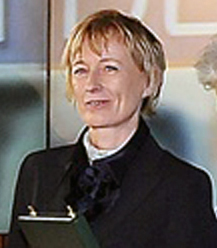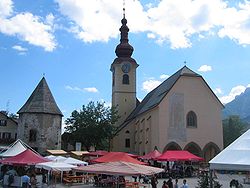NEW - Nives Meroi - mountaineer
One of history’s greatest female climbers
The climber Nives Meroi, widely regarded as one of history’s finest female mountaineers, was born on this day in 1961 in Bonate Sotto, a small town in the province of Bergamo, about 40km (25 miles) northeast of Milan. One half of a renowned husband-and-wife climbing team with Romano Benet, Meroi is one of only three women to have reached the peak of all 14 of the so-called eight-thousanders, the only mountains in the world that tower about 8,000m, topped by Everest (8,848m), which she conquered in 2007, and K2 (8,611), which she had scaled in 2006. Meroi completed the full set of 14 when she reached the summit of Annapurna (8,091m) in the Himalayas in 2017. She and Benet, born in Italy but who has Slovenian nationality, are the first married couple to have climbed all 14 together. The two first met more than 40 years ago in Tarvisio in Friuli Venezia Giulia, Benet’s hometown, situated in an Alpine valley close to the borders with Austria and Slovenia. Meroi, a student, was sharing a house with Benet’s sister. They began hiking and climbing together after discovering they had a common love of the mountainous scenery. Read more…
__________________________________________________________
Ranuccio II Farnese – Duke of Parma
Feuding with the Popes led to the destruction of a city
Ranuccio II Farnese, who angered Innocent X so much that the Pope had part of his territory razed to the ground, was born on this day in 1630 in Parma. Ranuccio II was the eldest son of Odoardo Farnese, the fifth sovereign duke of Parma, and his wife, Margherita de’ Medici. Odoardo died while Ranuccio was still a minor and, although he succeeded him as Duke of Parma, he had to rule for the first two years of his reign under the regency of both his uncle, Francesco Maria Farnese, and his mother. The House of Farnese had been founded by Ranuccio’s paternal ancestor, Alessandro Farnese, who became Pope Paul III. The Farnese family had been ruling Parma and Piacenza ever since Paul III gave it to his illegitimate son, Pier Luigi Farnese. He also made Pier Luigi the Duke of Castro. While Odoardo had been Duke of Parma he had become involved in a power struggle with Pope Urban VIII, who was a member of the Barberini family. The Barberini family were keen to acquire Castro, which was north of Rome in the Papal States. When Odoardo found himself unable to pay his debts, Urban VIII responded to the creditors’ pleas for help, by sending troops to occupy Castro. Read more…
____________________________________________________________
Reinhold Messner - mountaineer
Climber from Dolomites who conquered Everest
Reinhold Messner, the Italian mountaineer who was the first climber to reach the summit of Mount Everest without supplemental oxygen and the first to reach the peak on a solo climb, was born on this day in 1944 in Bressanone, a town in Italy's most northerly region of Alto Adige, which is also known as South Tyrol. Messner was also the first man to ascend every one of the world's 14 peaks that rise to more than 8,000 metres (26,000 ft) above sea level. His 1976 ascent of Everest with the Austrian climber Peter Habeler defied numerous doctors and other specialists in the effects of altitude who insisted that scaling the world's highest mountain without extra oxygen was not possible. Born only 45km from Italy's border with Austria, Messner grew up speaking German and Italian and has also become fluent in English. His father, Josef, introduced him to climbing and took him to his first summit at the age of five. He soon became familiar with all the peaks of the Dolomites. From a family of 10 children - nine of them boys - Messner shared his passion for adventure with brothers Günther and Hubert, with whom he would later cross the Arctic. Read more…
____________________________________________________________
Maria Luisa of Savoy
Girl from Turin ruled Spain while a teenager
Maria Luisa of Savoy, who grew up to become a queen consort of Spain with a lot of influence over her husband, King Philip V, was born on this day in 1688 at the Royal Palace in Turin. She was the daughter of Victor Amadeus II, Duke of Savoy, and his French wife, Anne Marie d’Orleans. Philip V of Spain wanted to maintain his ties with Victor Amadeus II and therefore asked for Maria Luisa’s hand in marriage. She was wed by proxy to Philip V in 1701 when she was still only 13. Maria Luisa was escorted to Nice and from there sailed to Antibes en route to Barcelona. The official marriage took place in November of the same year. Maria Luisa was both beautiful and intelligent and Phillip V was deeply in love with her right from the start. In 1702 when Philip V left Spain to fight in the War of the Spanish Succession, Maria Luisa acted as Regent in his absence. She was praised as an effective ruler despite being only 14 years old. She gave audiences to ambassadors, worked for hours with ministers, and prevented Savoy from joining the enemy. She inspired people to make donations towards the war effort and her leadership was admired throughout Spain. Read more…















